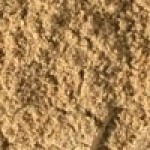Ginger
(Zingiber officinale)
Ginger – Ingl., Ingwer – Ted., Gingembre– Fr, Jengibre– Sp., Имби́рь - Russ.
Ginger belongs to the Zingiberaceae family and is native to Asia. It is cultivated in India, China, Japan, Nigeria, Brazil, Mexico, Peru, Thailand.
The rhizome of this aromatic plant is the part used as a spice.
It can be sold either fresh or dried, with skin or peeled.

Sliced ginger and powder, Nigeria origin.
Food Composition
Ginger contains: Resins, mucilage, starch, minerals (ash).
Culinary Use
Ginger has a spicy flavor and a pungent odor.
It is used mostly in oriental cuisine as a condiment for meat dishes and preparation of soups and sauces.
Ginger is also processed for canned products: ginger preserve, candied ginger and ginger syrup.
In Europe it is used for the preparation of typical sweets, especially northern European, like candy and crackers.
In Italy it is used for the preparation of gingerbread with cloves, nutmeg and star anise spice, useful and versatile spice – a “must have” in everybody’s kitchen.
Ginger is one of the ingredients in many curries and spices blends, also for meat processing.
Ginger is used in herbal teas, liqueurs and spirits and other beverages.
Healing Effect
Ginger is an excellent natural remedy, has healing effects antiemetic and antinausea, in cases of sea sickness and pregnancy.
Its analgesic and anticonvulsant properties help nervous system and stimulate circulation.
Ginger, like Cinnamon Queen, has digestive properties and aids treatment of diarrhea.
Finally, it stimulates circulation.
Preservation
Dried ginger should be stored in a cool, ventilated, poorly lit and dry place.





